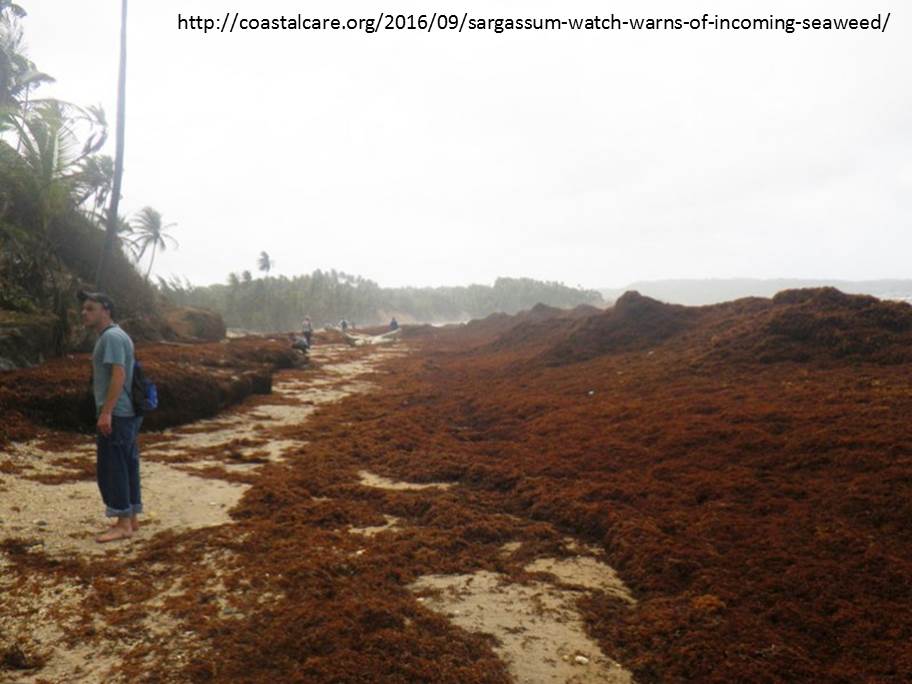This week I happened upon some fascinating biochar research focusing on charring seagrass wrack as a more sustainable means of disposal. Not only is this environmentally preferable as compared to landfilling it, which causes all sorts of GHG emissions from the decomposition stage, but in all likelihood it could be economically better too.
Let’s discuss climate change mitigation potential first. The reports states that in a mere 9.5km of Kenyan coastline, 6.8M kg of seagrass (dryweight) carpets the coast on an annual basis. In their research they achieved biochar production yields of 48 – 57% which is actually pretty astounding and definitely not the norm with most current biochar production technologies. (They did pulverize the seaweed prior to pyrolyzing so that likely provided increased yield.) Still for conservative calculations, let’s assume 25% biochar yield which is far more common. Using the low end of the carbon content range they found for seagrass of 34.6%, this one small stretch of beach, which is less than 1% of Kenya’s coastline, could sequester more than 2M kgs of CO2e per year – not including calculations for reducing methane emissions from rotting wrack!
Now on to economics. Imagine how places like Kenya could benefit from creating sustainable jobs, cleaning up coastlines and possibly even becoming a carbon negative country by carbonizing excess seagrass! On the cost reduction front, the article states that one coastal town in Australia spent more than $28M for wrack ridding in just one year. While there is a cost to collecting, handling, possibly drying and pyrolyzing seagrass, if mobile units could be taken to affected beaches, costs would most likely be lower, especially if carbon offsets were available.
Seagrass is not the only excessive bounty from the sea that could be carbonized. Seaweed, an algae that grows 30 – 60 times faster than most land-based plants, is becoming ever more abundant due to fertilizer abuse (amongst other reasons). Countries around the world that depend on beach tourism are increasingly beleaguered by odiferous mountains of Sargassum seaweed and kelp. This too often gets carted off to landfills or buried in ditches at great expense, largely born by hotel chains or governments. Carbonizing fast growing seaweed could be a very efficient and relatively low-tech way to rebalance carbon levels and meet CO2 reduction targets while solving other problems that can depress tourism income.
A challenge with this particular type of biochar is likely to be the (relatively) high salt content. For that reason it may not be ideal for use in certain soils. However, it could be used in other ways that might help island or coastal communities to adapt to climate change. Bagging it and piling it up to create artificial dunes could help when storm come and waters rise. Using it as a construction material for sea walls might be interesting. Perhaps it could be briquetted and used as green charcoal to reduce deforestation. Incorporating seachar into salt licks for livestock might even be worth testing. The point is, uses can be found!
I can’t even begin to calculate what the overall carbon mitigation potential is for all of this excess sea-based flora, but it is, as one of least palatable presidential candidate’s in US history would say, HUGE!


